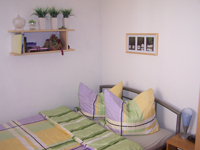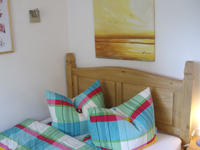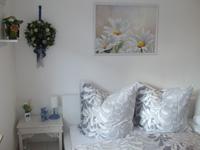We introduce: Cologne Buchforst
Buchforst is located in the district of Cologne on the right bank of the Rhine and belongs to the Mülheim district. The district has an area of 0.830.5 km², so it is quite small . The population is approximately 7364. Buchforst was incorporated into Cologne on October 25, 1932.

| District number | area | residents |
| 902 | 0.830.5 square kilometers | 8,000 |
Location of Buchforst
The eastern border of Buchforst is formed by the district Buchheim . To the west and north, Buchforst borders on Mülheim and south of the district Kalk . The federal road 55a forms the southern border to the district.
History of book forest
There was a former forest area called Buchforst in the area. This gave the district its name. The district was not populated until the 20th century. The non-profit corporation for housing construction acquired an 18 hectare site in Kalkerfeld in 1926. Then the development of this district began as building land. In the years between 1926 and 1927 the settlement "Blauer Hof" was built here. It is located in the north of Karlsruher Straße. The "White City" was built between 1929 and 1932 in the south. Wilhelm Riphahn and Caspar Maria Grod were the architects of the two settlements. They also designed the Catholic Church in Buchforst, St. Petrus Canisius. The district was only declared as "book forest" in 1932. In 1988 the two settlements "Blauer Hof" and "Weiße Stadt" were added to the list of monuments as a group monument.
Change in book forest
It was a forest area for a long time before it was settled in the 20th century. The "non-profit corporation for housing construction" bought an 18 hectare property in the "Kalkerfeld" in 1926 and had it developed as building land. There the settlement "Blauer Hof" (from 1926 to 1927) and then from 1929 to 1932 the so-called "White City" developed from Karlsruher Straße. This is south of Karlsruher Straße.
.gif)
.gif)
.gif)
.gif)
.gif)
.gif)
.gif)
.gif)
.gif)
The settlements were designed by architects Caspar Maria Grod and Wilhelm Riphahn.
Wilhelm Riphahn
The architect Wilhelm Riphahn mentioned above was extremely important for the city of Cologne. Because he gave important tips and impulses for the reconstruction of the city of Cologne and its urban development. He was born on July 25, 1889 in the cathedral city and grew up in a family that gave him a penchant for real estate. His parents were contractors, so it is not surprising to follow this career:
- Construction school
- Technical University of Munich
- Dresden University of Technology
- Technical University Berlin
- Work in a Siemens construction office in Berlin
- Work at the city building councilor Hans Erlwein Dresden
- Freelance architect in Cologne from 1913
It was he who, together with Mr. Caspar Maria Grod, had the first UFA palace built in Cologne in a rapid construction period of only five months. Later came the reconstruction of the city of Cologne (after the war) and the leadership in the urban development of the cathedral city. Examples are listed here:
- Construction around Offenbachplatz
- area between Rudolfplatz and Neumarkt
- the opera terraces
- the opera
- the playhouse
- the entrance to Deutzer Freiheit in Deutz
- Dresdner Bank Haus in the street "Unter Sachsenhausen"
- Housing complex in Cologne Mauenheim "Grüner Hof"
- Reconstruction of the Bastai in 1958
- Zollstock settlement from 1927 to 1930
- Sartory halls on Friesenstrasse in 1948
- the British Council in 1950
- the Faculty of Economics and Social Sciences at the University of Cologne
By the way, his grave can be found at the Melatenfriedhof .
.gif)
.gif)
.gif)
.gif)
.gif)
.gif)
.gif)
.gif)
.gif)
Traffic
The connection to the city is good!
- The construction of the Cologne-Buchforst train station started in 1986. It opened in 1990 and S-Bahn lines 6 and 11 stop here.
- The Stadtbahn line 3 and the bus line 159 also go to Buchforst
- There is also a feeder (B 55a) for the Köln-Ost motorway junction.
Attractions in Buchforst
We would like to mention the following structures or buildings:
- The "Blue Court"
- The "White City"
- The Catholic parish church of St. Petrus Canisius on the corner of Cusanusstrasse and Voltastrasse. The church was destroyed in the Second World War. Reconstruction began in 1948 and the architects Dominikus Böhm and his son Gottfried Böhm were the planners. Maria Schwarz designed the interior in the early 1990s.
- The "Evangelical Church of the Resurrection" is located in Kopernikusstraße. Georg Rasch and Winfried Wolsky built the church between 1965 and 1967. On October 2, 1992 the church was listed. The paving of the church extends into the church. Only two places are excluded. The church received international attention as an example of church construction in the 1960s. The church was abandoned in 2005 and since then it has served as a meeting center.
- There is a weekly market at Waldecker Straße , All kinds of goods are offered every Wednesday and Saturday from 7 a.m. to 1 p.m. . The market has existed since 1938.
Monuments in this district
Kalkberg is well worth seeing: it is a mountain that impresses with a 360 degree panorama. All parts of the city on the right bank of the Rhine can be admired here.
Your vacation in the cathedral town
Are you looking for guest houses, hotels or other accommodations in Cologne Buchforst ? Better book a nice holiday apartment Cologne in the city! Right where you actually want to go!



